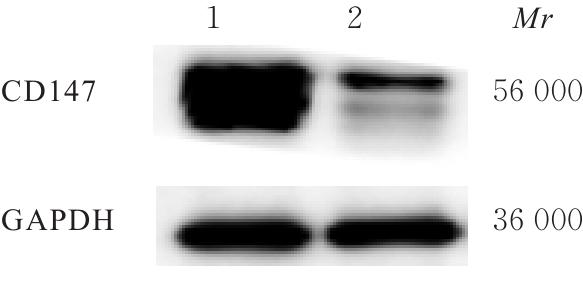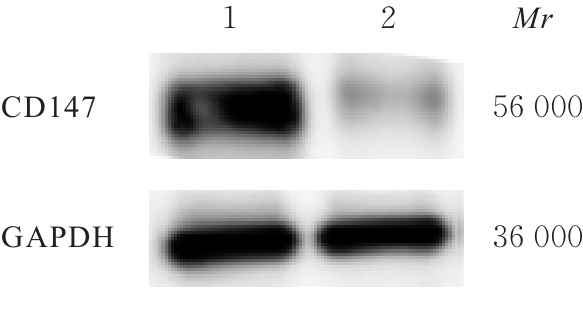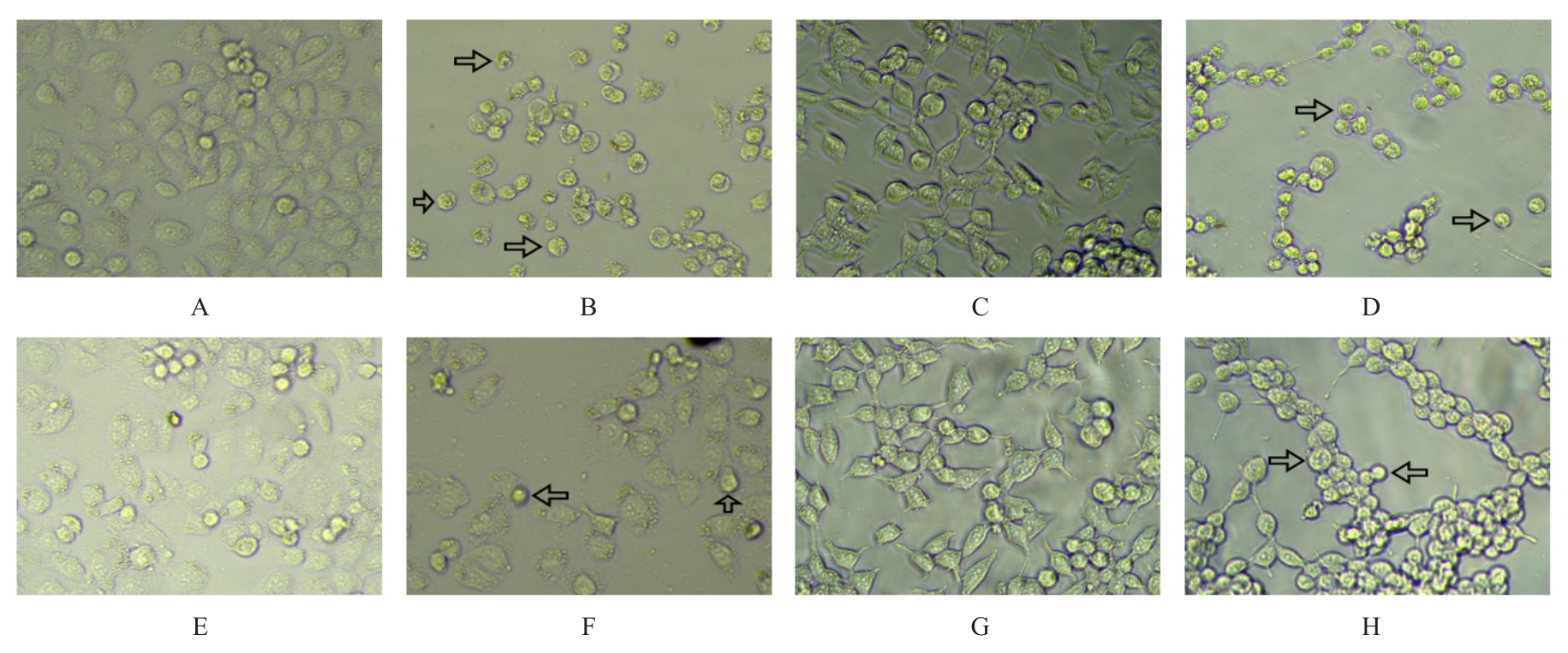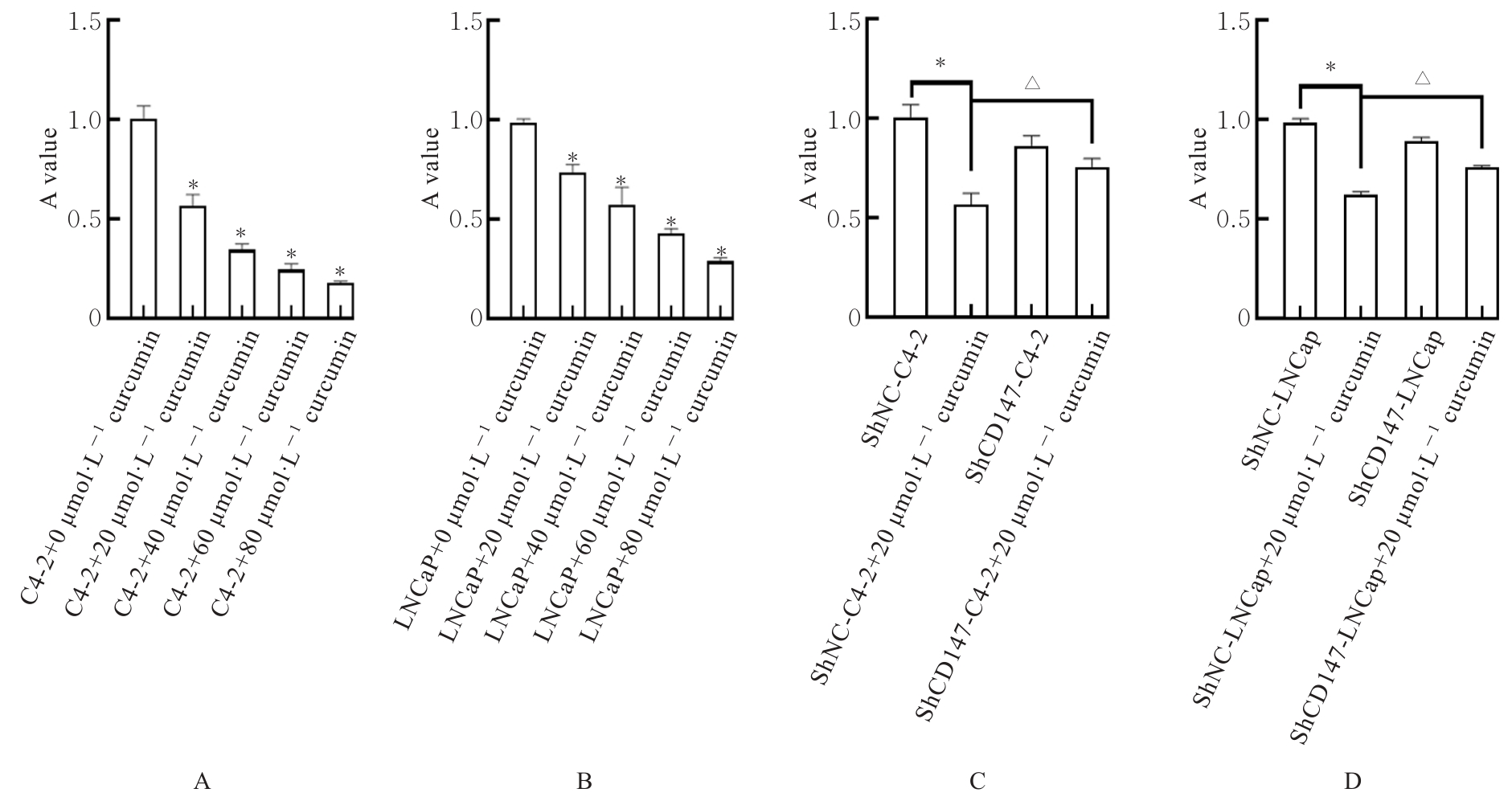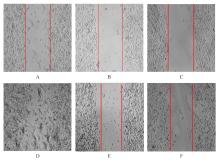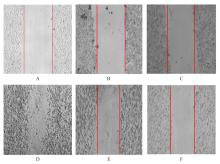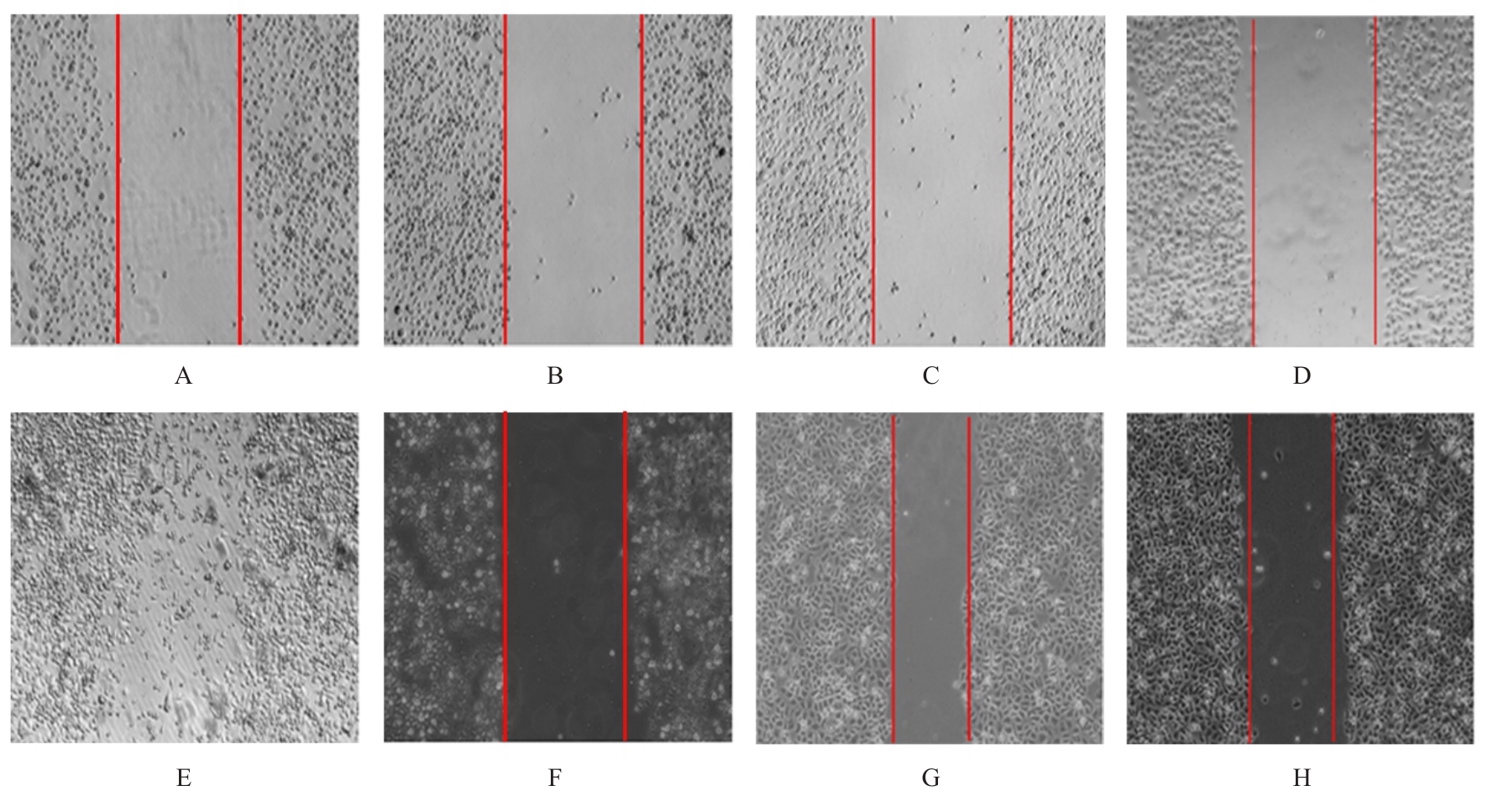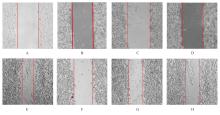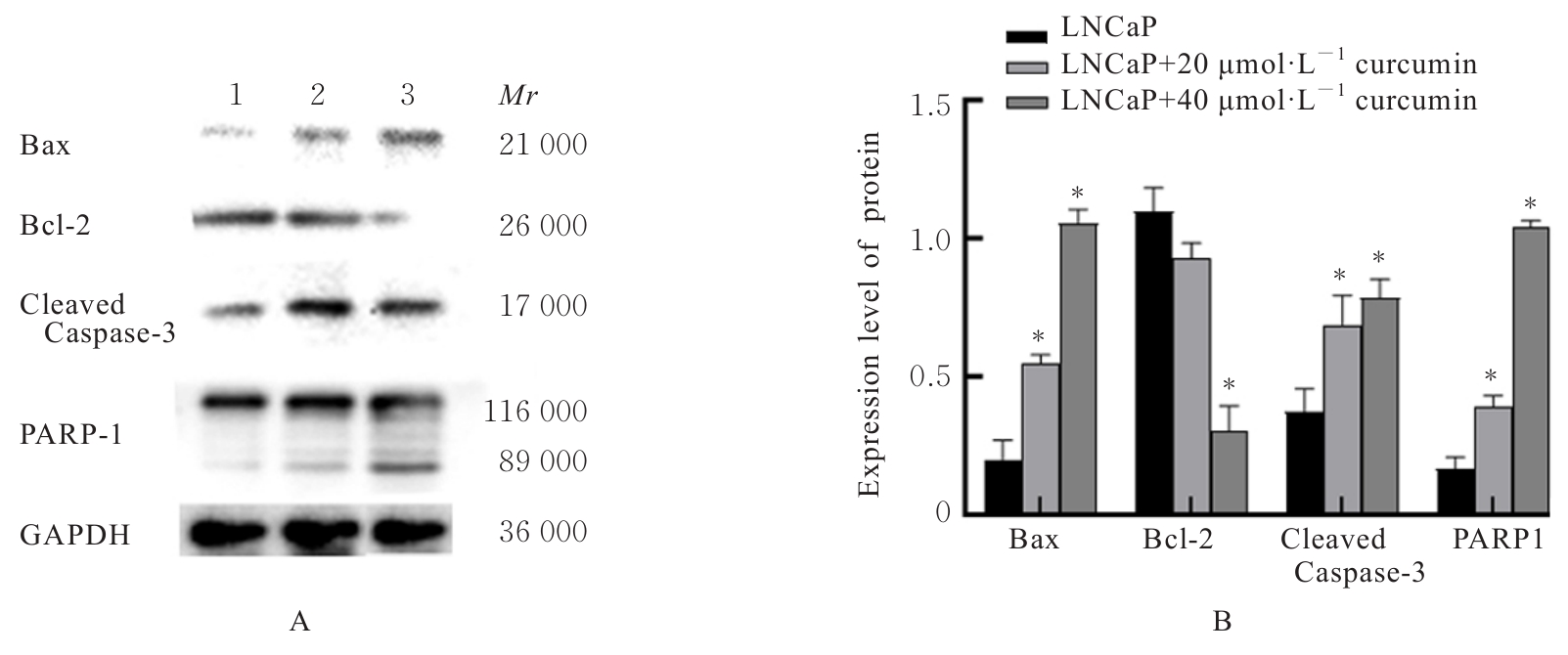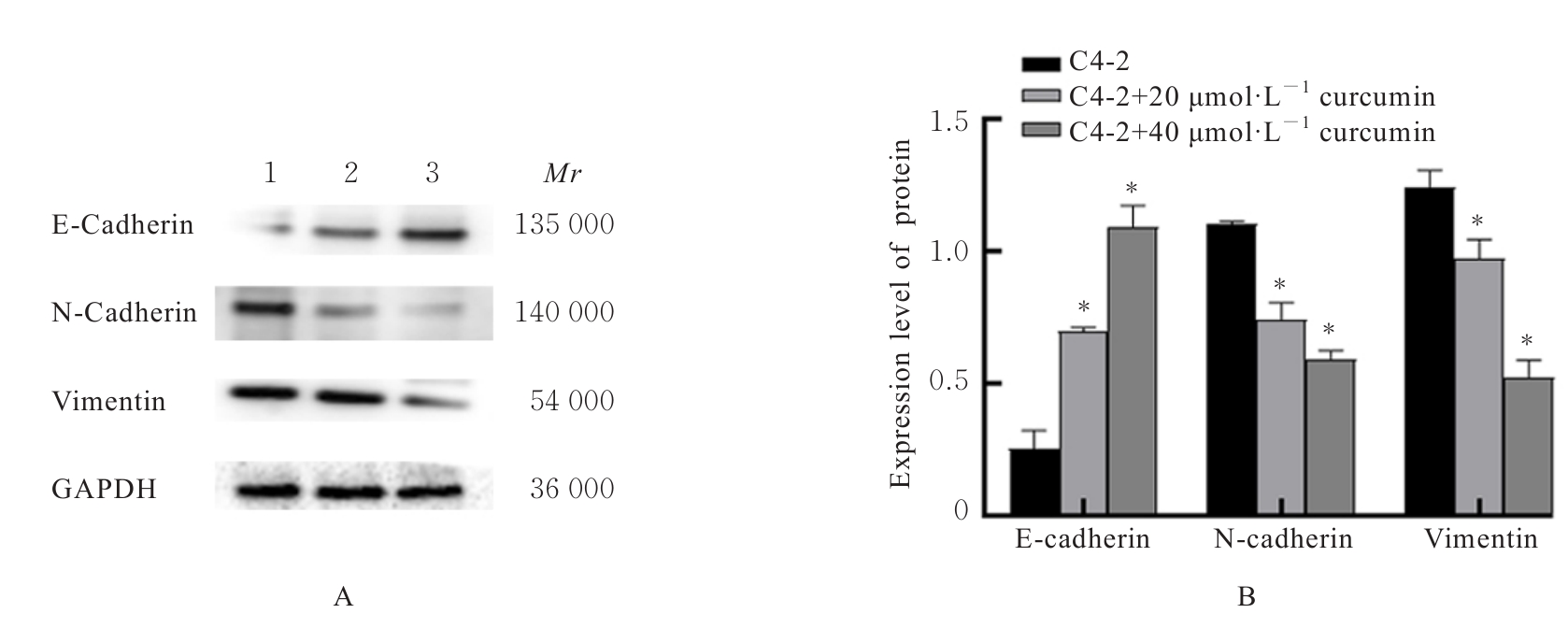吉林大学学报(医学版) ›› 2024, Vol. 50 ›› Issue (6): 1572-1586.doi: 10.13481/j.1671-587X.20240611
• 基础研究 • 上一篇
沉默CD147基因对姜黄素抑制前列腺癌细胞增殖、迁移、侵袭和诱导凋亡的影响
王馨1,赵杰瑞2,郭玉苗3,陈姝彤1,侯宗昊1,张若文1( )
)
- 1.北华大学基础医学院病原生物学教研室,吉林 吉林 132000
2.澳门科技大学中医药学院附属医院骨外科,广东 珠海 519003
3.延边大学医学院生物化学教研室,吉林 延吉 133000
Effect of silencing CD147 gene on proliferation, migration, invasion, and inducing apoptosis of prostate cancer cells inhibited by curcumin
Xin WANG1,Jierui ZHAO2,Yumiao GUO3,Shutong CHEN1,Zonghao HOU1,Ruowen ZHANG1( )
)
- 1.Department of Pathogenic Biology,School of Basic Medical Sciences,Beihua University,Jilin 132000,China
2.Department of Orthopedics,Affiliated Hospital,Traditional Chinese Medicine,Macao University of Science and Technology,Zhuhai 519000,China
3.Department of Biochemistry,School of Medical Sciences,Yanbian University,Yanji 133000,China
摘要:
目的 探讨姜黄素对人前列腺癌C4-2细胞和LNCaP细胞增殖、迁移及侵袭的影响,并阐明其可能的作用机制。 方法 采用慢病毒转染系统分别转染C4-2细胞和LNCaP细胞,作为shCD147-C4-2组和shCD147-LNCaP组。采用RNA干扰技术制备沉默CD147基因细胞,以转入空载体的细胞作为阴性对照,分为shNC-C4-2组(shNC-C4-2细胞)和shNC-LNCaP组(shNC-LNCaP细胞)。取生长对数期C4-2、LNCap、shCD147-C4-2和shCD147-LNCaP细胞,加入20 μmol·L-1姜黄素,处理0和24 h时,显微镜观察各组细胞形态表现。噻唑蓝(MTT)法检测各组细胞增殖活性,细胞划痕实验检测各组细胞迁移率,Western blotting法检测各组细胞中凋亡、侵袭和迁移相关蛋白表达水平。 结果 与C4-2组比较,沉默CD147基因后shCD147-C4-2组细胞中CD147蛋白表达量明显减少;与LNCaP组比较,沉默CD147基因后shCD147-LNCaP组细胞中CD147蛋白表达量明显减少。与处理0 h比较,20 μmol·L-1姜黄素处理24 h后C4-2组和LNCaP组部分细胞出现凋亡征象,且有典型凋亡小体存在;shCD147-C4-2组和shCD147-LNCaP组细胞凋亡现象减弱。MTT法检测,与C4-2+ 0 μmol·L-1姜黄素组比较,C4-2+20 μmol·L-1姜黄素组、C4-2+40 μmol·L-1姜黄素组、C4-2+ 60 μmol·L-1姜黄素组和C4-2+80 μmol·L-1姜黄素组细胞增殖活性均明显降低(P<0.01);与LNCaP+ 0 μmol·L-1姜黄素组比较,LNCaP+20 μmol·L-1姜黄素组、LNCaP+40 μmol·L-1姜黄素组、LNCaP+60 μmol·L-1姜黄素组和LNCaP+80 μmol·L-1姜黄素组细胞增殖活性均明显降低(P<0.01);与shNC-C4-2组比较,shNC-C4-2+20 μmol·L-1姜黄素组细胞增殖活性明显降低(P<0.01);与shNC-C4-2+20 μmol·L-1姜黄素组比较,shCD147-C4-2+20 μmol·L-1姜黄素组细胞增殖活性明显升高(P<0.01);与shNC-LNCaP组比较,shNC-LNCaP+20 μmol·L-1姜黄素组细胞增殖活性明显降低(P<0.01);与shNC-LNCaP+20 μmol·L-1姜黄素组比较,shCD147-LNCaP+20 μmol·L-1姜黄素组细胞增殖活性明显升高(P<0.01)。细胞划痕愈合实验检测,姜黄素处理24 h,与C4-2组比较,C4-2+20 μmol·L-1姜黄素组和C4-2+40 μmol·L-1姜黄素组细胞迁移率均明显降低(P<0.01);与LNCaP组比较,LNCaP+20 μmol·L-1 姜黄素组和LNCaP+40 μmol·L-1 姜黄素组细胞迁移率均明显降低(P<0.01);与shNC-C4-2组比较,shNC-C4-2+20 μmol·L-1姜黄素组细胞迁移率明显降低(P<0.01);与shNC-C4-2+20 μmol·L-1姜黄素组比较,shCD147-C4-2+20 μmol·L-1 姜黄素组细胞迁移率明显升高(P<0.05);与shNC-LNCaP组比较,shNC-LNCaP+20 μmol·L-1姜黄素组细胞迁移率明显降低(P<0.01);与shNC-LNCaP+20 μmol·L-1姜黄素组比较,shCD147-LNCaP+20 μmol·L-1姜黄素组细胞迁移率明显升高(P<0.05)。Western blotting法检测,与C4-2组比较,C4-2+20 μmol·L-1姜黄素组和C4-2+40 μmol·L-1姜黄素组细胞中B细胞淋巴瘤2(Bcl-2)相关X蛋白(Bax)、裂解的含半胱氨酸的天冬氨酸蛋白酶3(cleaved Caspase-3)和聚二磷酸腺苷(ADP)-核糖聚合酶1(PARP1)蛋白表达水平均明显升高(P<0.01),Bcl-2蛋白表达水平均明显降低(P<0.05或P<0.01);与LNCaP组比较,LNCaP+20 μmol·L-1姜黄素组和LNCaP+40 μmol·L-1姜黄素组细胞中Bax、cleaved Caspase-3和PARP1蛋白表达水平均明显升高(P<0.01),LNCaP+40 μmol·L-1 姜黄素组Bcl-2蛋白表达水平明显降低(P<0.01);与shNC-C4-2组比较,shNC-C4-2+20 μmol·L-1 姜黄素组细胞中Bax、cleaved Caspase-3和PARP1蛋白表达水平均明显升高(P<0.01),Bcl-2蛋白表达水平明显降低(P<0.05);与shNC-C4-2+20 μmol·L-1姜黄素组比较,shCD147-C4-2+20 μmol·L-1姜黄素组细胞中Bax和cleaved Caspase-3蛋白表达水平均明显降低(P<0.01)。与shNC-LNCaP组比较,shNC-LNCaP+20 μmol·L-1姜黄素组细胞中Bax、cleaved Caspase-3和PARP1蛋白表达水平均明显升高(P<0.05或P<0.01),Bcl-2蛋白表达水平明显降低(P<0.05);与shNC-LNCaP+20 μmol·L-1姜黄素组比较,shCD147-LNCaP+20 μmol·L-1姜黄素组细胞中Bax、cleaved Caspase-3和PARP1蛋白表达水平均明显降低(P<0.05或P<0.01),Bcl-2蛋白表达水平明显升高(P<0.05)。与C4-2组比较,C4-2+20 μmol·L-1姜黄素组和C4-2+40 μmol·L-1姜黄素组细胞中E-钙黏蛋白(E-cadherin)蛋白表达水平均明显升高(P<0.01),神经钙黏蛋白(N-cadherin)和波形蛋白(Vimentin)蛋白表达水平均明显降低(P<0.01);与LNCaP组比较,LNCaP+20 μmol·L-1姜黄素组和LNCaP+40 μmol·L-1姜黄素组细胞中E-cadherin蛋白表达水平均明显升高(P<0.01),LNCaP+40 μmol·L-1姜黄素组细胞中N-cadherin和Vimentin蛋白表达水平均明显降低(P<0.01);与shNC-C4-2组比较,shNC-C4-2+ 20 μmol·L-1姜黄素组细胞中N-cadherin和Vimentin蛋白表达水平均明显降低(P<0.01);与shNC-C4-2+20 μmol·L-1姜黄素组比较,shCD147-C4-2+20 μmol·L-1姜黄素组细胞中E-cadherin蛋白表达水平明显降低(P<0.01),N-cadherin和Vimentin蛋白表达水平均明显升高(P<0.01);与shNC-LNCaP组比较,shNC-LNCaP+20 μmol·L-1姜黄素组细胞中E-cadherin蛋白表达水平明显升高(P<0.01),N-cadherin和Vimentin蛋白表达水平均明显降低(P<0.01);与shNC-LNCaP+20 μmol·L-1姜黄素组比较,shCD147-LNCaP+20 μmol·L-1姜黄素组细胞中E-cadherin蛋白表达水平明显降低(P<0.01),N-cadherin表达水平明显升高(P<0.05)。 结论 姜黄素对体外前列腺癌细胞增殖、迁移和侵袭有抑制作用,并诱导细胞凋亡,沉默CD147基因可在一定程度上降低其抑制作用和诱导细胞凋亡能力。
中图分类号:
- R735.25

